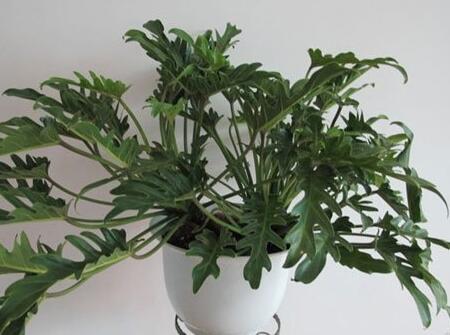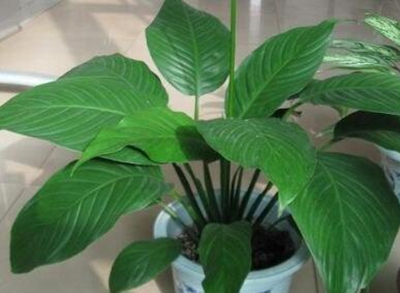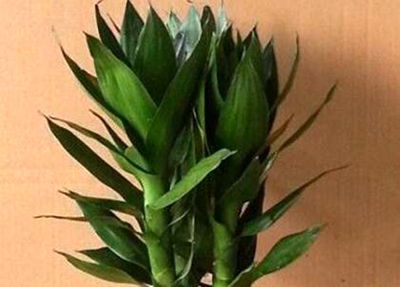What if the spring feather leaves turn yellow? The causes of the yellowing of spring feather leaves and its solutions
Chunyu is a very good foliage potted plant, because the leaf shape is very similar to the tortoise back bamboo, and people often confuse them. It is native to tropical areas such as South America, likes a warm and humid environment, has strong adaptability, and is now widely cultivated. In a dry climate, it has a certain tolerance to high and low temperatures, but it is not resistant to cold. Often some flower friends lead to the yellowing of spring feather leaves due to improper management. what should we do at this time? Now please listen to the editor one by one.

What if the spring feather leaves turn yellow?
The main reasons for the yellowing, drying and curling of spring feather leaves are caused by five deficiencies in basin soil, namely, nitrogen deficiency, phosphorus deficiency, potassium deficiency, magnesium deficiency and iron deficiency. In addition, there are other reasons, such as water yellow caused by water and fertilizer, that is, too much water leads to long-term wet soil water, poor air permeability and even partial fibrous root rot. It shows that the tender leaves of spring feathers are dark yellow and dull, and the new shoots are atrophied. Let's look at the specific reasons below:
1. Lack of necessary elements
The main results are as follows: 1. the basin soil is short of nitrogen, the spring feather leaves are small, the leaves are yellowish, the lower leaves are yellow first, the whole plant loses green gradually, and the lower part is more yellowish.
2. the basin soil is phosphorus deficient, the spring feather leaves are curly, the leaves are dark green, and the veins of the lower leaves are yellowed.
3. The potted soil is short of potassium, and the edge of the lower leaf is brown and easy to lodge.
4. the basin soil is lack of magnesium, and the edge and middle of the leaves turn green and white from the bottom to the top.
5. The basin soil is lack of iron, and the scorched brown spot is dry.
Solution: the above reasons are all yellowing due to the lack of necessary elements, as long as the missing elements are added when fertilizing. (florists have to judge what yellowing type their plants belong to according to their symptoms in order to prescribe the right medicine.)
II. Other reasons
1, fat yellow, that is, fat, showing that the tips of the old leaves of spring feathers turn yellow and fall off, and although the new leaves are thick and shiny, they are generally concave and convex.
Solution: if it is a valuable flower, you can sprinkle a layer of pakchoi or radish seeds and pull it out a few days after emergence to consume nutrients.
2. Dry and yellow, due to lack of water or dehydration for a long time, although the new leaves of spring feathers have normal leaf color, the lower leaves gradually dry yellow and fall off and age.
Solution: watering regularly, and watering must be done thoroughly but not waterlogged.
3. Alkali yellow, especially some plants in the south like acidic soil, while the alkaline water quality in the north shows that the leaves gradually fade, turn yellow or even fall off.
Solution: the easiest way is to pour fermented rice washing water or Rain Water.
4. The water is yellow and watered too often, resulting in too much waterlogging. The drainage hole at the bottom of the basin can not drain effectively.
Solution: need to change the soil to re-build a small tile or screen window.
5. The growth environment is too closed, the light is too dark, lack of light can not carry out photosynthesis and respiration can not produce enough nutrients and chlorophyll, resulting in yellow leaves.
Solution: spring feather flowers like light and avoid strong direct light, the growth environment is best maintained under semi-overcast or scattered light conditions, not long-term placed in a shady environment, otherwise the leaves are very easy to yellowing.
6. The air is too dry, resulting in insufficient moisture on the leaf surface, unable to carry out photosynthesis and respiration, can not produce enough nutrients and chlorophyll, resulting in leaf yellowing.
Solution: the indoor temperature of spring feather flowers should be kept around 20oC, especially when hydroponics can not be lower than 10oC, but also to avoid heating, air conditioning and cold air blowing. Indoor air humidity is required to be kept between 50% and 75%, less than 50% of the dry edge of yellow leaves, often by spraying and sprinkling water to increase air humidity.
Chunyu maintenance experience:
Key points of water training:
1. Nutrient solution: change the water once a week and add the nutrient solution at the same time.
2, light: strong adaptability to light, like the sun, but also quite resistant to shade, summer avoid direct sunlight, it is better to place bright scattered light.
3. Temperature: 18-30 °C is suitable, and the overwintering temperature is not less than 5 °C.
4. Maintenance: Chunyu likes a warm and humid environment. Resistant to cold and drought. The northern climate is dry, pay attention to maintain a certain humidity, summer should be sprayed to the leaf every day to maintain humidity.
Special reminder: pay attention to ventilation in summer, otherwise, high temperature is prone to soft rot.
Time: 2019-04-12 Click:
- Prev

Plain sailing. What if the leaves turn yellow?
Rich bamboo is also known as longevity bamboo, and white palm is welcomed by everyone because it means plain sailing. However, in the process of breeding, if you encounter the problem of yellowing leaves, it will especially affect the beauty. Today, we will teach you how to make the leaves yellowing smoothly. There are more and more friends who breed plain sailing.
- Next

What if the leaves of lotus bamboo turn yellow? Causes of yellowing of lotus bamboo leaves and its solutions
Whether it is soil culture or water culture of lotus bamboo, there will be the phenomenon of yellowing of leaves at the base or branches. The high ornamental value of lotus bamboo is mainly due to its green leaves and its high momentum. The leaves are yellow, but they don't look good. What causes the leaves of lotus bamboo to turn yellow?
Related
- Fuxing push coffee new agricultural production and marketing class: lack of small-scale processing plants
- Jujube rice field leisure farm deep ploughing Yilan for five years to create a space for organic food and play
- Nongyu Farm-A trial of organic papaya for brave women with advanced technology
- Four points for attention in the prevention and control of diseases and insect pests of edible fungi
- How to add nutrient solution to Edible Fungi
- Is there any good way to control edible fungus mites?
- Open Inoculation Technology of Edible Fungi
- Is there any clever way to use fertilizer for edible fungus in winter?
- What agents are used to kill the pathogens of edible fungi in the mushroom shed?
- Rapid drying of Edible Fungi

